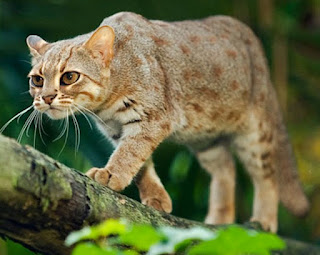 |
| Tree Cricket |
Tree Crickets have two pairs of wings, and powerful hind legs for jumping. Their coloration depends on the species and habitat, but they are always well camouflaged. Some come in green shades, while others are more brown, to match either the shrubs, bushes, trees, or grasses that they live in.
These Crickets, as with many other insects, make their calls by rubbing their wing tips together. Only males can make these loud calls, female are unable.
One really interesting feature of the Tree Cricket is that they practice something called "Courtship Feeding." After mating, the male produces a fluid that is taken by the female. It is full of nutrients and helps the female to successfully reproduce. She will lay the eggs in small holes drilled into tree bark. And though they are deposited in the fall, they will not hatch until spring. The young Crickets will struggle to get out of their egg cases, and will feed on tiny insects like aphids in order to grow. Depending on the species, it can take between 5 and 12 molts for them to reach adulthood.
IUCN Status : Not Listed
Location : Every Continent but Antarctica
Classification : Phylum : Arthropoda -- Class : Insecta -- Order : Orthoptera
Family : Gryllidae -- Subfamily : Oecanthinae
Family : Gryllidae -- Subfamily : Oecanthinae
 RSS Feed
RSS Feed Twitter
Twitter 12:36
12:36
 booker2o73lister58
booker2o73lister58



































